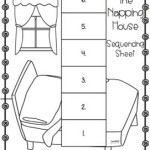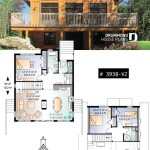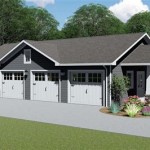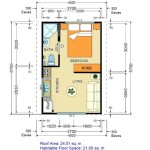Frank Lloyd Wright Home Floor Plans: A Symphony of Design
Frank Lloyd Wright, the visionary architect, revolutionized residential design with his iconic floor plans. Wright's homes were not merely structures but orchestrated spaces that seamlessly integrated with their surroundings. Understanding the essential elements of Frank Lloyd Wright home floor plans is essential to appreciate their architectural brilliance.
1. Open-Plan Concept
Wright's floor plans defied traditional compartmentalization, embracing an open-plan concept that allowed spaces to flow effortlessly into each other. This fluidity created a sense of spaciousness and interconnectedness, blurring the boundaries between different areas of the home.
2. Central Focal Point
Many Wright homes feature a central focal point, often a fireplace or grand staircase, that anchors the space. This central element serves as a gathering point, creating a sense of intimacy and cohesion within the open-plan layout.
3. Connection to Nature
Wright believed in the harmonious relationship between architecture and nature. His floor plans incorporate large windows, skylights, and outdoor terraces that blur the boundaries between indoor and outdoor spaces. This connection to nature brings natural light and fresh air into the home, creating a serene and uplifting atmosphere.
4. Efficient Use of Space
Despite their open-plan concept, Wright's floor plans are renowned for their efficient use of space. Built-in furniture, clever storage solutions, and multipurpose areas ensure that every inch of the home is utilized. This functionality enhances the livability and comfort of the space.
5. Natural Materials
Wright used natural materials, such as wood, stone, and brick, to create a warm and inviting atmosphere in his homes. The integration of organic elements connects the home to its natural surroundings and adds a sense of authenticity and timelessness.
6. Custom-Designed Features
Each Frank Lloyd Wright home is a unique work of art, with custom-designed features that reflect the specific needs and preferences of the client. From intricate millwork to bespoke lighting fixtures, these details add a personal touch and make each home truly exceptional.
7. Integration of Art and Architecture
Wright's homes are not just buildings; they are gesamtkunstwerks—total works of art. He believed that architecture should encompass all aspects of design, including furniture, lighting, and decorative elements. This holistic approach creates a cohesive and aesthetically pleasing environment.
Conclusion
Frank Lloyd Wright home floor plans are more than just blueprints; they are architectural masterpieces that exemplify his vision of organic architecture. Their open-plan concept, central focal point, connection to nature, efficient use of space, use of natural materials, custom-designed features, and integration of art and architecture create homes that are both functional and inspiring. Understanding these essential elements is crucial to appreciating the brilliance of Frank Lloyd Wright's architectural legacy.

Frank Lloyd Wright Home Plans Homes

Gallery Of Ad Classics Frederick C Robie House Frank Lloyd Wright 9

Frank Lloyd Wright Homes Usonian House

An Evolving Aesthetic Frank Lloyd Wright S Home Studio In Oak Park Illinois The Craftsman Bungalow

Willey House Stories Part 13 The Plow That Broke Plains Frank Lloyd Wright Foundation

An Evolving Aesthetic Frank Lloyd Wright S Home Studio In Oak Park Illinois The Craftsman Bungalow

Three Frank Lloyd Wright Unbuilt Houses Brought To Life As Digital Reconstructions

Gallery Of Ad Classics Frederick C Robie House Frank Lloyd Wright 10
Frank Lloyd Wright Houses His 20 Most Famous Homes Buildings Studios Architecture Design

File Wright Hickox Second Floor Plan Png Wikipedia








